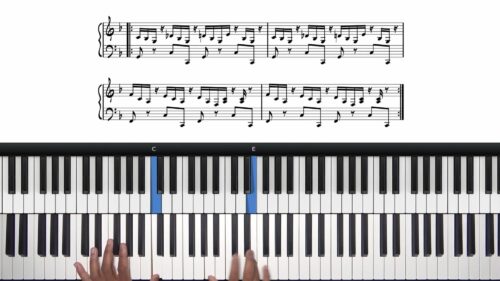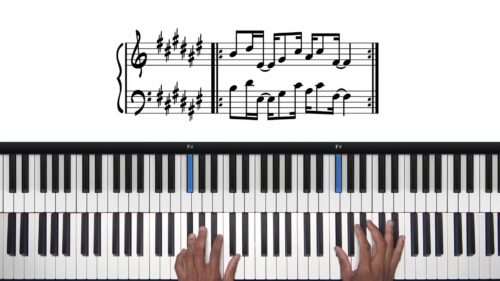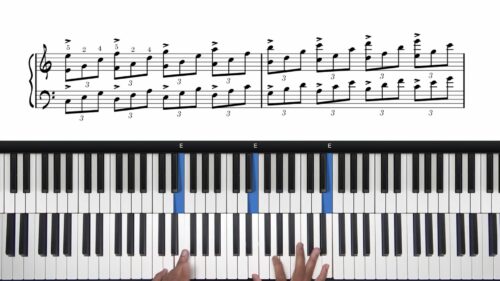Clave & Cascara Patterns
In this lesson we explore two of the most important and foundational elements of Cuban music which are the clave and the cascara.
The clave and the cascara create the spine of Cuban music and so we start this course with a detailed exploration of these 2 rhythms. We explore the construction and origins of these rhythmic patterns and outline a variety of drills and exercises for pianists who are new to Cuban piano.
Son Clave & Rumba Clave
The 2 forms of clave are ‘son clave’ and ‘rumba clave’. These 2 forms of clave are very similar except that the son clave starts on the 2-3 side of the clave, and the rumba clave starts on the 3-2 sides of the clave.
Some musicians use the terminology ‘2-3 clave’ and ‘3-2 clave’, whereas growing up in Cuba, Elio learnt these clave patterns as ‘son clave’ and ‘rumba clave’. Understand that these terms can be used interchangeably.
The fourth beat of the son clave is the most important beat. It’s the beat that most dancers use when dancing to this traditional style of son montuno. Pay attention to the ‘hiccup’ in the rumba clave pattern which is heard in “Guaguancó” – a sub-genre of Cuban rumba.
The Cascara Pattern
The cascara pattern is a foundational rhythm in Cuban music. It contains the rhythmic information of the clave and conga and also the parts played by the piano in Cuban music.
Elio instructs all of his students to learn the cascara pattern and to keep it in mind when improvising. The cascara pattern contains most of the rhythmic information that you need to know when playing Cuban piano styles.
Tumbao Bass Line with Clave & Cascara
Once you have internalised the clave and cascara patterns, play the Tumbao bass pattern in your left hand and tap the clave pattern in your right hand.
Repeat this drill but by tapping the cascara pattern in your right hand over the Tumbao bass line. The cascara pattern can also be embellished with accents and ghost notes as Elio demonstrates to create an infectious and highly-syncopated groove.
Montuno Pattern with Clave & Cascara
In the final chapter we introduce another series of drills using a montuno pattern in our right hand which is an adaptation of the role of the tres guitar from traditional forms of son montuno.
Elio demonstrates tapping the clave and cascara patterns in the left hand whilst playing the montuno patterns on the piano in the right hand.
Practice Tips
-
Familiarise yourself with the 2 forms of clave pattern by tapping the rhythms and counting each beat.
-
Familiarise yourself with the cascara pattern by tapping the rhythm and counting each beat of the bar as Elio demonstrates.
-
Tap the clave and cascara rhythms in your right hand whilst playing a Tumbao bass line pattern in your left hand.
-
Learn and memorise the montuno pattern which is adapted from the role of the tres guitar. Practice the pattern in both hands on the piano.
-
Finally, play the montuno pattern on the piano in your right hand whilst tapping the clave and cascara rhythms in your left hand.







great!